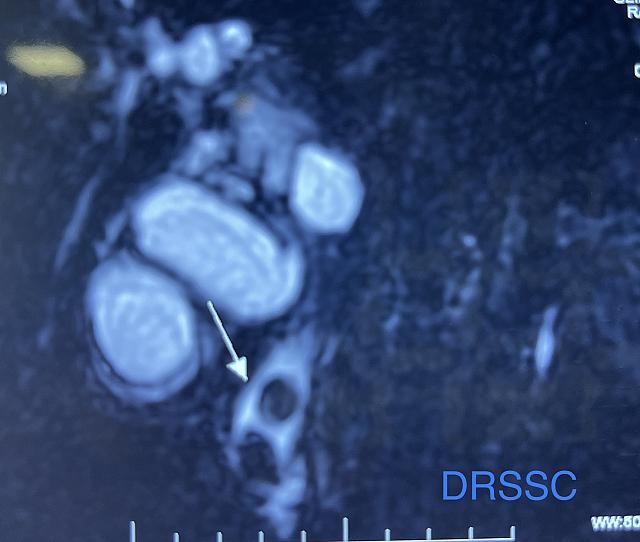
GALL STONE DISEASE WITH BILE DUCT STONES (CHOLEDOCHOLITHIASIS)
Posted on 2023-07-27 03:34:00 by SathishHere there will be stones in the gall bladder and common bile duct. The clinical presentation may be due to calculus cholecystitis or its complications like common bile duct stones or biliary pancreatitis. In case of associated bile duct stones or pancreatitis, it will be treated first to stabilise the patient. Then the treatment is directed towards both bile duct stones and gall stone disease. The treatment options are as follows.
First step is to stabilize the patients with analgesics, antibiotics and other supportive management.
Next step is to confirm the diagnosis of both gall stones and bile duct stones.
Asses the general condition of the patient including gall bladder related problems and non-gall bladder problems.
After assessing all these factors, the treatment option has to be decided.
The commonly performed treatment options are
1.ERCP AND LAPAROSCOPIC CHOLECYSTECTOMY
This procedure is done in case of gall stones with CBD stone without any demonstrable complications. First ERCP is done to remove the bile duct stones. During ERCP, bile duct stone will be removed along with biliary stenting. After doing successful ERCP and stone extraction with biliary stenting, laparoscopic cholecystectomy will be performed. This procedure is done usually 24 to 48 hours after ERCP procedure. In case of any ERCP induced pancreatitis, the laparoscopic cholecystectomy will be done little later once the pancreatitis settle down. About four to six weeks after laparoscopic cholecystectomy, check MRCP will be done to rule out residual bile duct stones. If no residual bile duct stones, then biliary stent can be removed.
2.ERCP AND OPEN CHOLECYSTECTOMY
In patients with gall stone and bile duct stones, ERCP with bile duct stone extraction along with biliary stenting will be done. Then open cholecystectomy is done if there is any technical difficulty in performing laparoscopic cholecystectomy. In case of any upper abdominal surgery where the surgeon feels laparoscopy is not safe then open cholecystectomy will be performed.
Sometime the presence of large stone in the common bile duct cannot be removed through ERCP. In such cases, a biliary stent will be placed. Then, open cholecystectomy with Common Bile Duct exploration can be performed. In this situation, because of presence of biliary stent, the placement of T-tube in the bile duct following bile duct exploration can be avoided.
3.LAPAROSCOPIC CHOLECYSTECTOMY WITH CBD EXPLORATION WITH T-TUBE DRAINAGE
In case of gall stone disease with common bile duct stone, laparoscopic cholecystectomy with bile duct exploration is a good option. This is done in case few medium sized stones in the common bile duct demonstrated by MRCP. Presence of multiple stones and stone impacted in the lower common bile duct will have technical difficulty in doing through laparoscopy technique.
First, laparoscopic cholecystectomy will be done. Then common bile duct will be identified and stay sutures will be taken over the bile duct. Then bile duct will be opened vertically for a distance of about 1.5 to 2 cm. Stones will be extracted. The completion of stone extraction is assessed by check cholangiogram or choledochoscopy. Once the clearance of the bile duct stone is confirmed then a T-tube will be placed in the bile duct and the opening in the bile duct will be closed with absorbable sutures. After check MRCP after 4 to 6 weeks of this procedure, the T- tube will be removed.
4.OPEN CHOLECYSTECTOMY WITH CBD EXPLORATION WITH T-TUBE DRAINAGE.
This is done in case of large CBD stones, previous history of distal gastric surgery like gastrectomy, severe lung disease where the patient is not fit for general anaesthesia and poor general condition of the patient.
First, open cholecystectomy will be done. Then common bile duct will be identified and stay sutures will be taken over the bile duct. Then bile duct will be opened vertically for a distance of about 2cm. Bile duct stones will be extracted. The completion of stone extraction is assessed by check cholangiogram or choledochoscopy. Once the clearance of the bile duct stone is confirmed then a T-tube will be placed in the bile duct and the opening in the bile duct will be closed with absorbable sutures. Check MRCP will be done 4 to 6 weeks of this procedure, to rule out residual CBD stones. If there is no stones in the CBD then the T- tube will be removed.
5.OPEN CHOLECYSTECTOMY WITH CBD EXPLORATION WITH CHOLEDOCHODUODENOSTOMY
This is done in case of large CBD stones, multiple stones, grossly dilated common bile duct and suspected tendency to develop bile duct stones.
First, open cholecystectomy will be done. Then common bile duct will be identified and stay sutures will be taken over the bile duct. Then bile duct will be opened vertically for a distance of about 2cm just above the duodenum. Bile duct stones will be extracted. The completion of stone extraction is assessed by check cholangiogram or choledochoscopy. Once the clearance of the bile duct stone is confirmed then choledochoduodenostomy will be performed. This is done by opening duodenum transversely for about 2cm and anastomosing with vertically opened bile duct with absorbable sutures. A drainage tube will be placed in the abdominal cavity and abdomen will be closed.
6.OPEN CHOLECYSTECTOMY WITH CBD EXPLORATION WITH HEPATICOJEJUNOSTOMY
This is a rarely done procedure as in case of Mirizzi’s syndrome. Here there will be an abnormal communication between gall bladder and bile duct. Once cholecystectomy with fistula disconnection is done then the stones in the bile duct will be removed. If fistula is small, then the fistula will be closed over a T-tube. But in case of large fistula then a loop of jejunum will be prepared and anastomosed with bile duct. This procedure will prevent the development stricture in the bile duct.
So, the gall stones with bile duct stones are managed in different way depending upon the situation of the stones in the bile duct.
